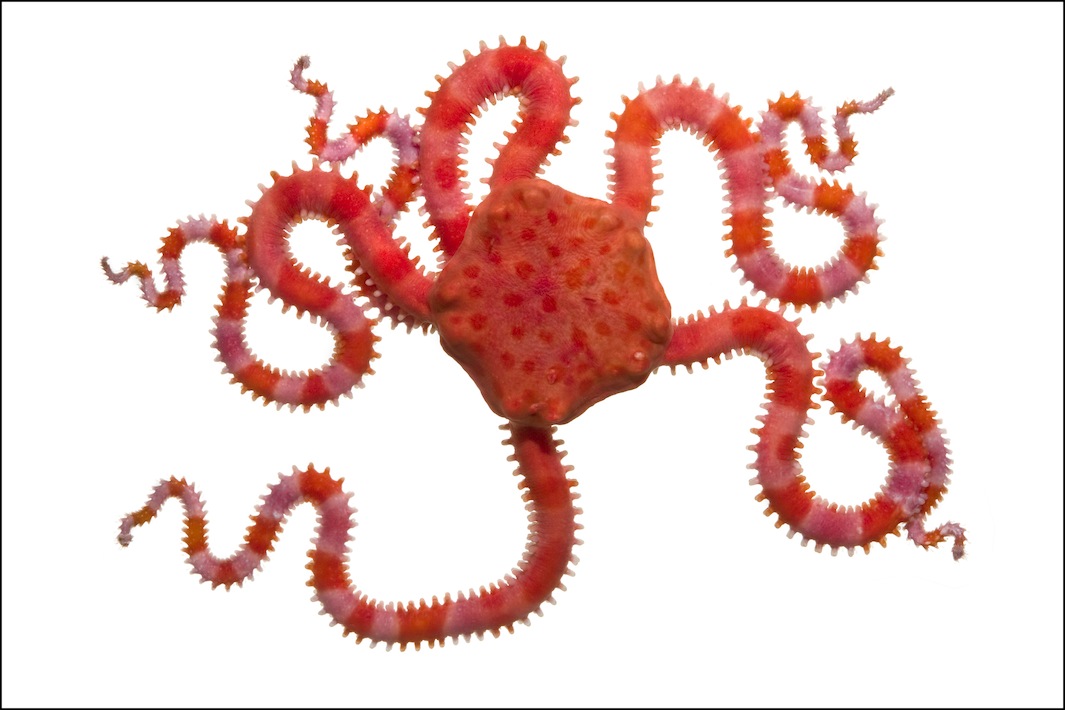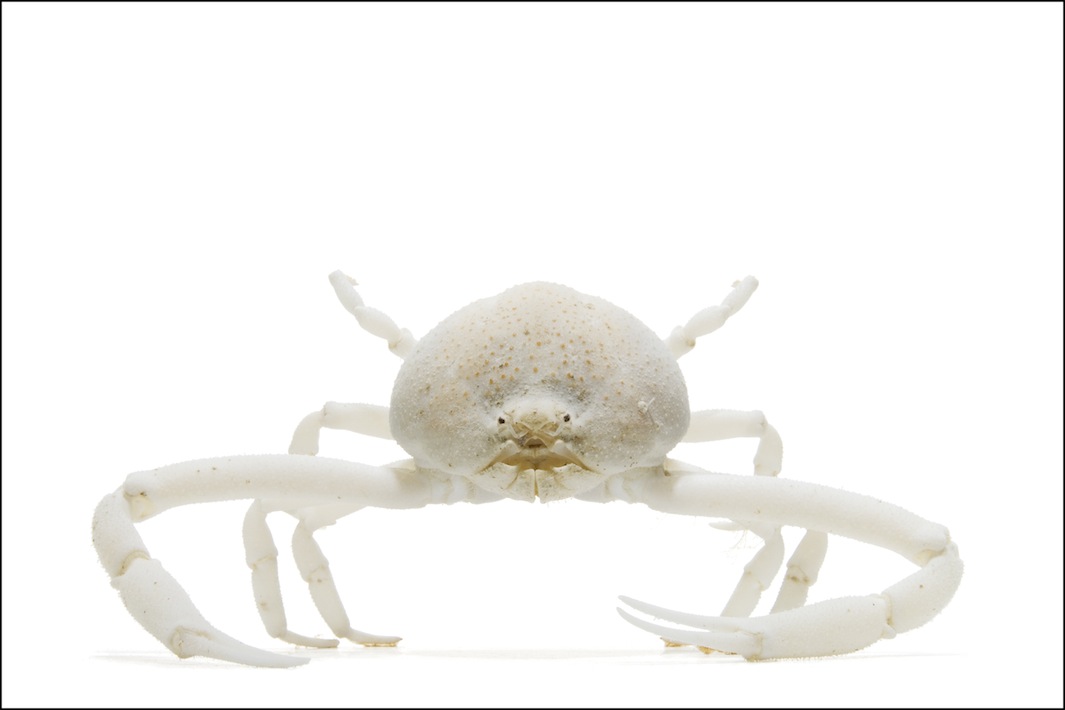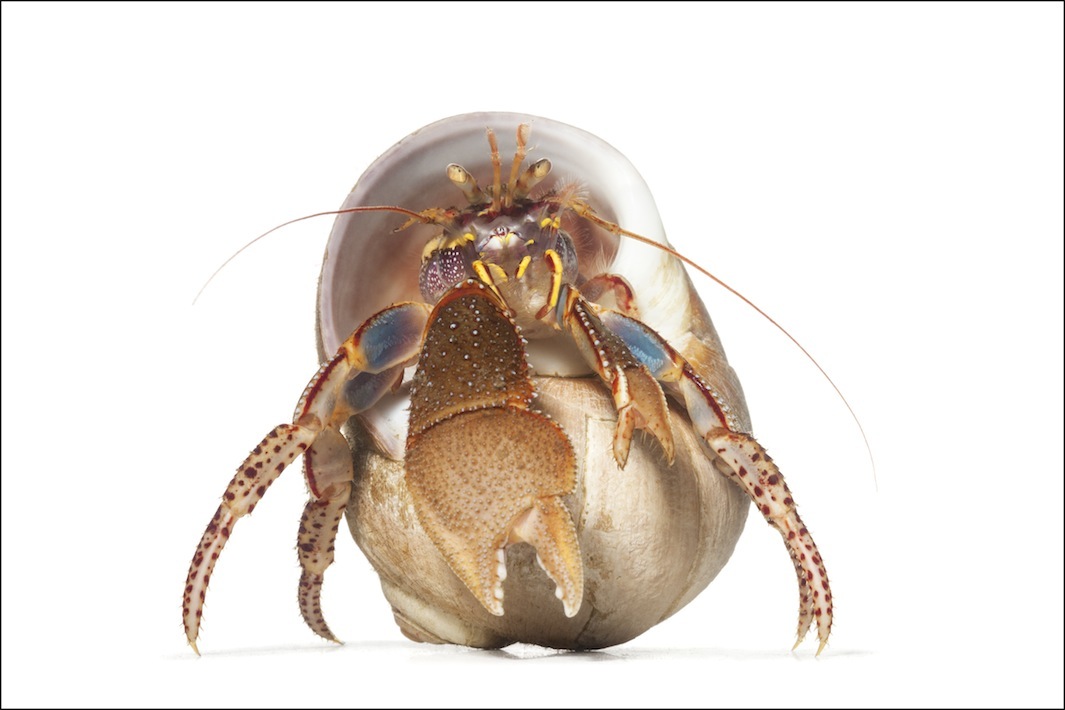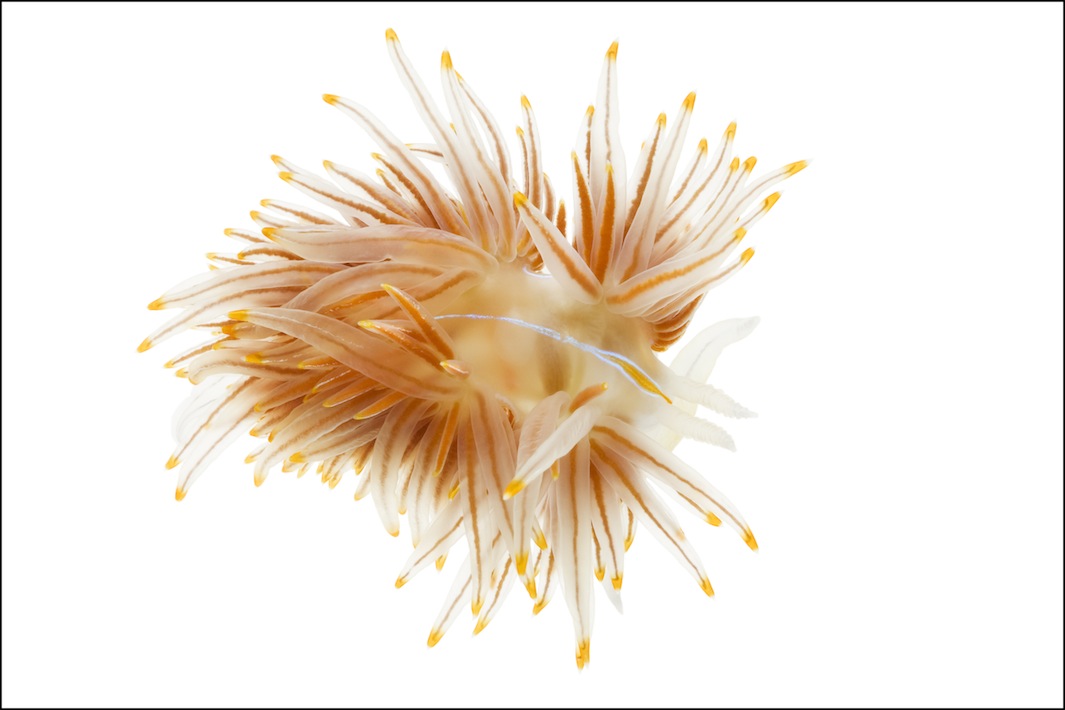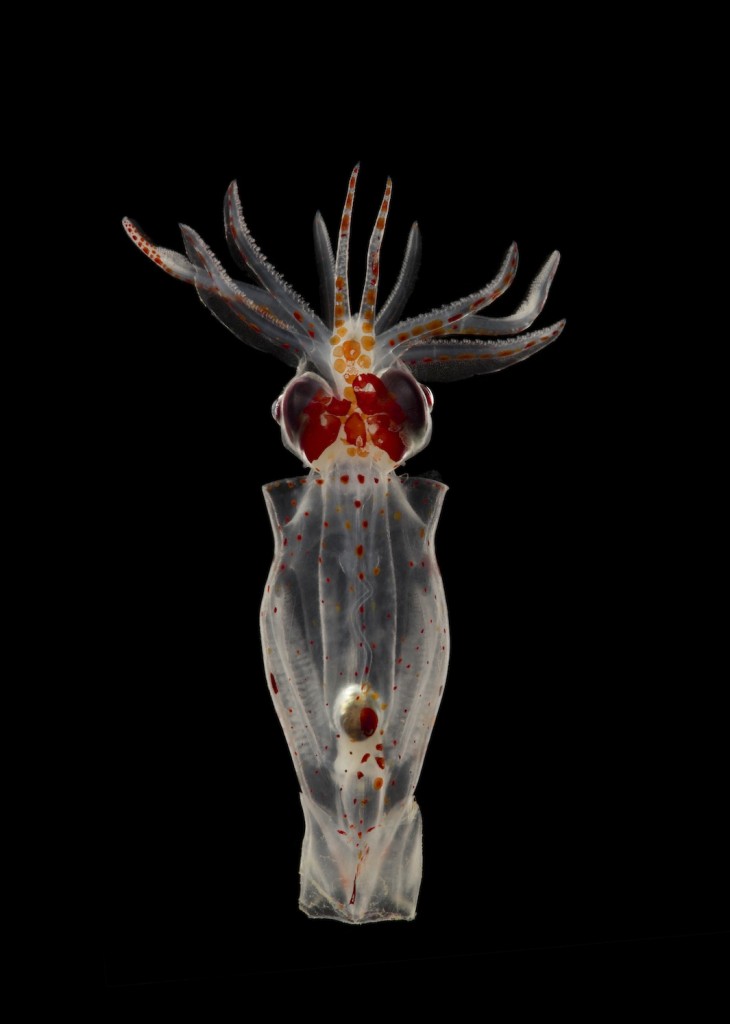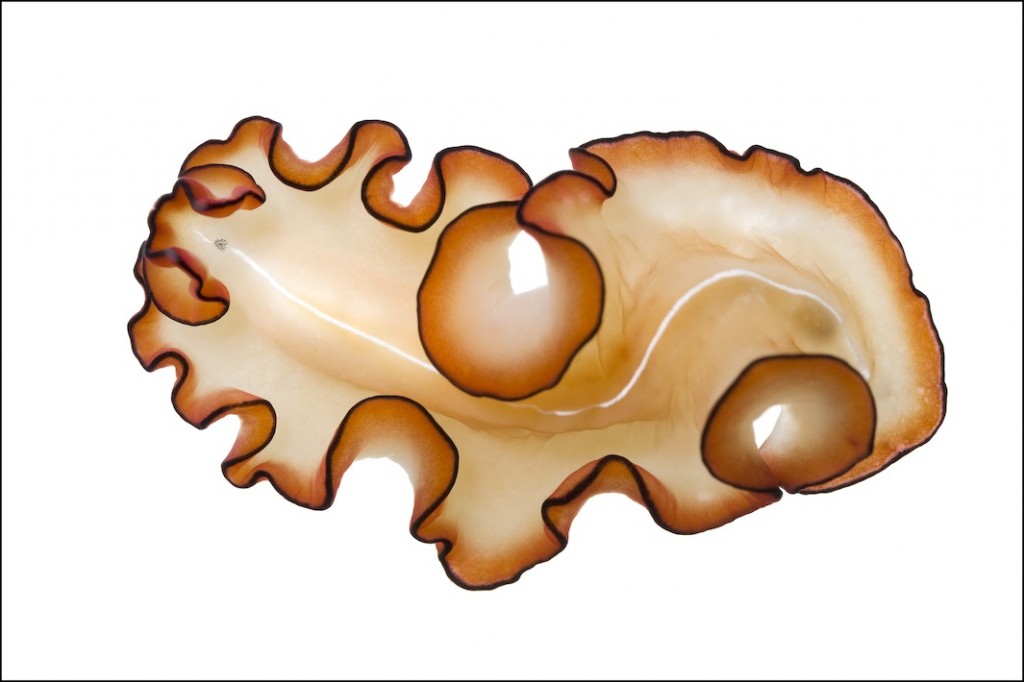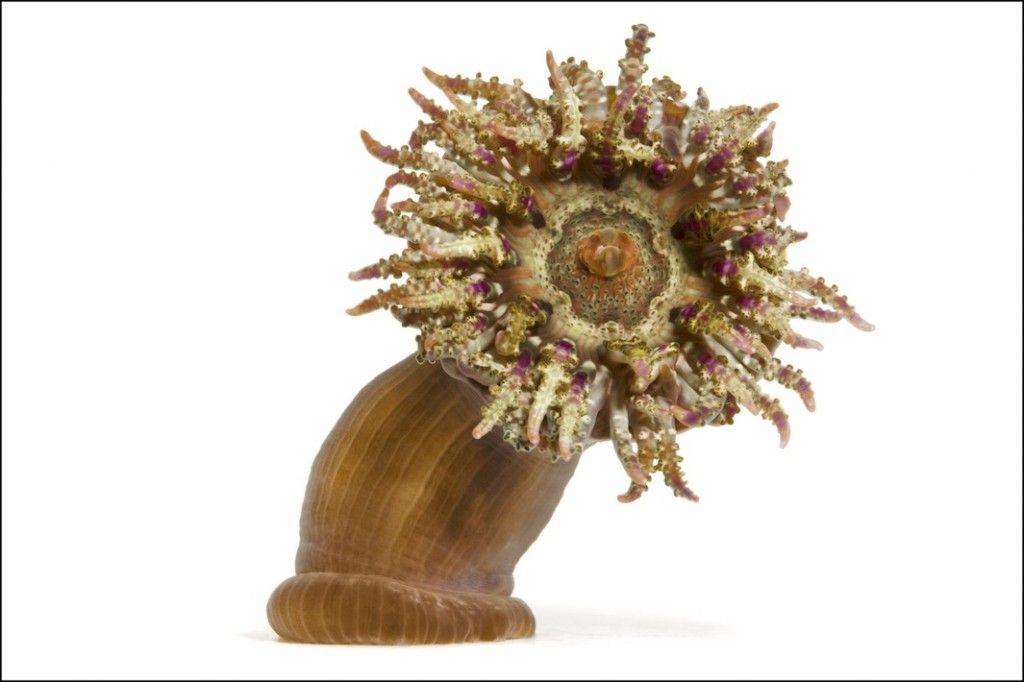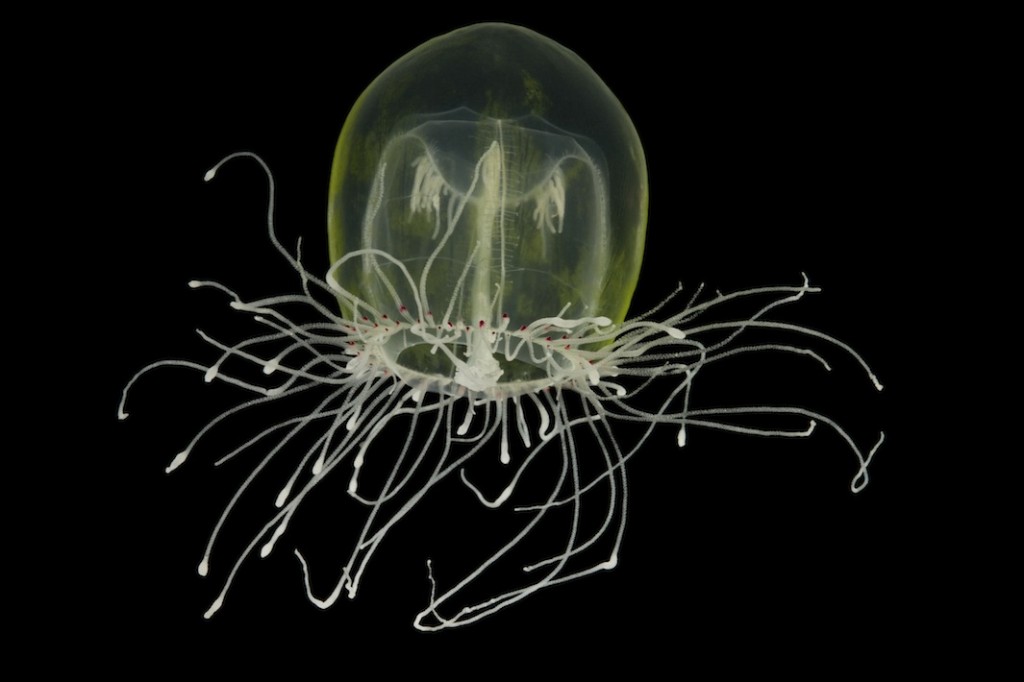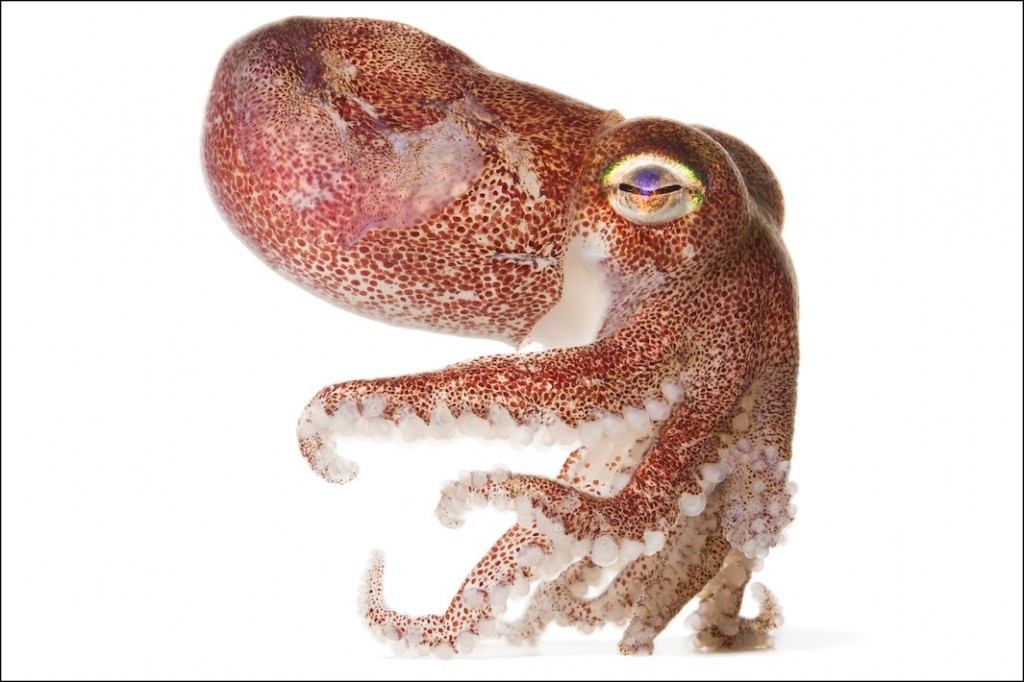Article courtesy of slate.com by: Jordan G. Teicher | Photo credit: Susan Middleton – please click here for original article.
Above: White Phantom Crab (Tanaoa distinctus).
Photographing animals is never easy, but marine invertebrates—underwater creatures without backbones—are especially tricky: They tend to be small, sometimes they’re transparent, and they’re often quite fast moving. But the effort, Susan Middleton says, is worth it if it helps educate the public about these creatures, which make up more than 98 percent of the known animal species in the ocean and are an important part of our evolutionary history.
“I like to think of humans riding on the ‘shoulders’ of the marine invertebrates—even though most of them don’t have shoulders. We are the beneficiaries of many of their inventions: bilateral symmetry, a central nervous system, respiration, a circulatory system, and on and on. We wouldn’t be here without them; they are the foundation of everything,” she said via email.
Above: Widehand Hermit (Elassochirus tenuimanus).
Above: Opalescent Nudibranch (Hermissenda crassicornis).
Above: Pink Brittle Star (Ophiomyxa australis).
On paper, it might be hard to imagine that humans have anything in common with these strange-looking animals. But Middleton, who has been photographing plants and animals for 30 years, wants to change that. In her new book, Spineless: Portraits of Marine Invertebrates, The Backbone of Life, which was published in October by Abrams, Middleton shows that these animals have personality by capturing them the same way she would photograph “a head of state or a celebrity or my best friend.”
“I watch them and observe their behavior. I wait until they seem comfortable in the aquarium,” she said. “I want to photograph gestures that are natural expressions of who they are. I try to create environments where they can reveal themselves. I don’t approach them with preconceptions, but I do see things sometimes that I associate with our own gestures, such as the Stubby Squid. It appears laid back and relaxed and comfortable in its own skin.”
For her book, Middleton photographed at sea on National Oceanic and Atmospheric Administration research vessels: one in the Northwestern Hawaiian Islands near French Frigate Shoals, and another in the Line Islands near Palmyra, Jarvis, and Kingman Reef in the central Pacific Ocean. She also photographed at Friday Harbor Marine Laboratory on San Juan Island, Washington.
On the ships, Middleton set up temporary studios in the wet lab, which she shared with scientists conducting research, using modified aquariums to accommodate her subjects. She worked with marine zoologists and scientific divers to collect the species, and sometimes she collected them herself.
Above: Black-Eyed Squid (Gonatus onyx).
Above: Orange-Rimmed Flatworm cf. (Maiazoon orsaki).
Above: Frilled Anemone (Phymanthus sp.).
Most of these animals have only been photographed previously for scientific purposes; a few were recently discovered and have never been photographed before. In the Northwestern Hawaiian Islands, Middleton traveled with the first expedition to focus specifically on marine invertebrates there. Two previously unknown species making their debut in the book are the Kanaloa Squat Lobster (Babamunida kanaloa) and the WanaWana Crab (Sakaila wanawana), both collected in a retrofitted lobster trap at a depth of around 800 feet.
Marine invertebrates have been around for millions of years, but their existence is threatened: One of the effects of climate change is ocean acidification, “a simple chemistry experiment” whose consequences are “disastrous for marine invertebrates.”
While most people don’t see many marine invertebrates in their daily lives, Middleton says it’s important to learn about and protect them. “It’s a mistake to dismiss them as unimportant lower animals that are not worthy of our regard. As an artist I am interested in their bizarre beauty, but understanding how they make their living in the sea gives me a lot of respect, even reverence, for them. I love their strangeness; vertebrates seem boring and predictable by comparison.”
Above: Red-Eye Medusa (Polyorchis penicillatus).
Above: Gold-Banded Hermit Crab (Dardanus brachyops).
Above: Stubby Squid (Rossia pacifica).

